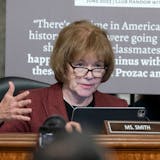Even though we graduated the same year from the same school (sort of), I didn't know Philando Castile. When I attended St. Paul Central High school from 1997-2001, my dad would often comment that Central is really two schools in one building.
In my teenage mind, I somewhat comprehended what he meant: Most white middle and upper-middle class students were in honors classes in the IB or Quest programs, while most students of color were in "regular" classes.
In my fog of grief, I can remember only a few students of color in honors classes with me. My gym and health classes were the only ones more integrated. Though we were all in the same building, white students and students of color lived in different worlds.
This is wrong. This is white privilege. This is not a critique of Central specifically. This is merely one facet of systemic racism: two different schools in one building.
My father was not trying to criticize the school, either. He was lamenting our broken world. This week, I comprehended my father's lament in a new, heartbreaking way.
Philando Castile and I both graduated from Central High school in 2001. Our names were 13 spaces apart in the yearbook. But our fates took two different paths because of the color of our skin. And I did not know him.
Deeply, deeply, I did not know Philando. In fact, I did not know many of my classmates of color on a deep level. It wasn't until seminary that I learned the story of Emmett Till. It wasn't until I lived in Chicago during my mid-20s that I formed friendships with black people that were deep and trust-filled enough to discuss race.
In all my years of high school, I do not remember ever bringing a black friend into our family's home, or visiting a black friend in theirs. In the first quarter century of my life, my relationships with people of color were very limited.


